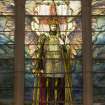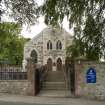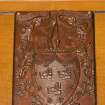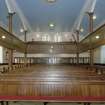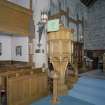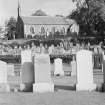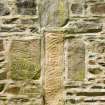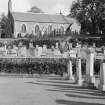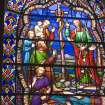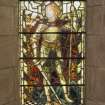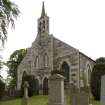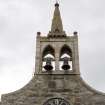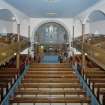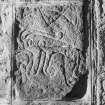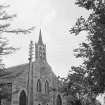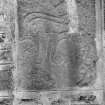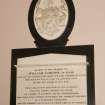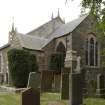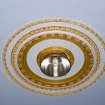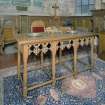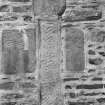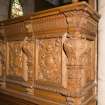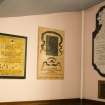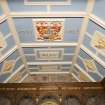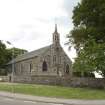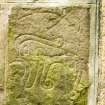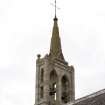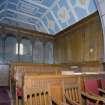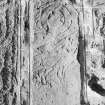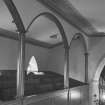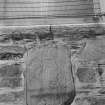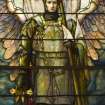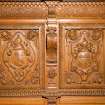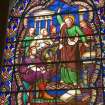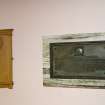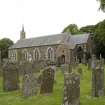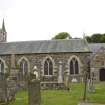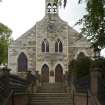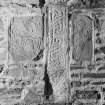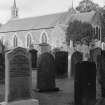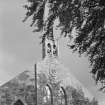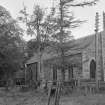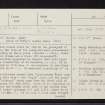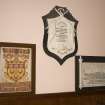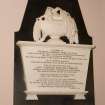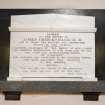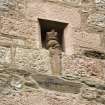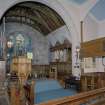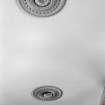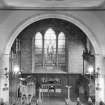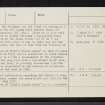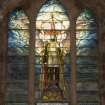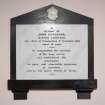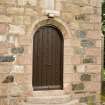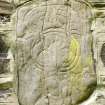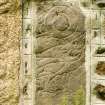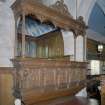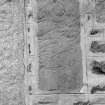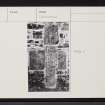Pricing Change
New pricing for orders of material from this site will come into place shortly. Charges for supply of digital images, digitisation on demand, prints and licensing will be altered.
Fyvie, St Peter's Church
Church (19th Century) (1808), Long Cist (Early Medieval), War Memorial (20th Century)
Site Name Fyvie, St Peter's Church
Classification Church (19th Century) (1808), Long Cist (Early Medieval), War Memorial (20th Century)
Alternative Name(s) Fyvie, Church; Grave Of Tifty's Bonnie Annie; Fyvie Parish Church; War Memorial Plaque
Canmore ID 19032
Site Number NJ73NE 1
NGR NJ 76850 37777
Datum OSGB36 - NGR
Permalink http://canmore.org.uk/site/19032
- Council Aberdeenshire
- Parish Fyvie
- Former Region Grampian
- Former District Banff And Buchan
- Former County Aberdeenshire
NJ73NE 1.00 76850 37777
NJ73NE 1.01 NJ 7688 3777 Pictish symbol stone
NJ73NE 1.02 NJ 7684 3777 Pictish symbol stone
NJ73NE 1.03 NJ 7684 3777 Cross-shaft
NJ73NE 1.04 NJ 7684 3777 Pictish symbol stone
NJ73NE 1.05 NJ 76852 37751 Burial Ground
(NJ 7684 3777) Church (NAT)
Grave of Tifty's Bonnie Annie (NAT)
OS 6" map, (1959)
The parish church built in 1808 in the graveyard of St Peter's, on the site of its early-Medieval predecessor, and incorporating in the E gable (rebuilt c. 1904), three Class I symbol stones and a Class III cross-shaft.
The dedication suggested to Simpson (1935) that this might be one of the foundations of St Boniface, c. 750. It is first on record in 1178 when it was bestowed on the Abbey of Arbroath (NO64SW 18). It measured internally 90' by 22'.
Of the sculptured stones only two belong to this site - the "eagle" stone and the cross-shaft. The "elephant" stone came from the front wall of Fyvie schoolhouse (NJ 7656 3810), where it is published on 1st ed., 6" map, and the fourth stone came to the church from the garden of Rothie Brisbane (NJ 7456 3783), where it is published on 1st ed 6". It is said to have been brought there by Jas Hay Chalmers who had found it serving as a drain-cover on the old county road between Rayne (NJ 69 30) and Auchterless (NJ 71 41). Since he is also said to have removed to Rothie Brisbane a sculptured stone from the centre of the stone circle (NJ63SE 5) at Tocherford near this road, it may be that only the one stone is involved, and that it came from the vicinity of Tocherford. "The Grave of Tifty's Bonnie Annie" is that of Agnes Smith who died in 1673, and is celebrated in local ballad. The gravestone is a 19th century replacement of the original. An oriented long cist with a cup-marked cover slab, found on Kirkton farm, is probably associated with the church. It was discovered on the removal of road-metal from a pit near the road in 1882.
J R Allen and J Anderson 1903; J Ritchie 1915; J A Henderson 1907; W D Simpson 1935; Name Book 1869; 1871; A Bremner 1888; Anon 1882.
Built 1808; alterations and additions c. 1900. Two carved wood panels dated 1603 and 1671 respectively; 1609 Burgerhuys bell and another dated 1809.
G Hay 1957.
Construction (1808)
Fyvie Church NJ73NE 1.00
Collection items DM1920/2 relate to the churchyard extension.
Built: 1808
Photographic Survey (September 1960)
Photographic survey of Fyvie Church and the Pictish symbol stones, Aberdeenshire, by the Scottish National Buildings Record in September 1960.
Field Visit (5 February 1973)
No further information regarding the church or long cist. The symbol stones and cross-shaft are still in the E gable at NJ 7688 3777. "The Grave of Tifty's Bonnie Annie" is as described.
Visited by OS (ISS) 5 February 1973.
Project (25 May 2022 - 5 October 2022)
NJ 71661 40179 to NJ 76327 37861 A historic environment desk study and associated walkover survey was prepared to provide historic environment advice in relation to the installation of a 33kV underground cable between Fyvie and Gordonstown in Aberdeenshire. A total of 33 possible heritage assets were identified within the 100m study area surrounding the proposed UG cable route.
Information from J Moorhouse – Mott MacDonald.
OASIS ID: mottmacd2-436933
Field Visit (30 May 2022 - 31 May 2022)
NJ 76850 37777 Rectangular building, made of roughly coursed and squared granite with polished granite window and door surrounds, as well as quoins. Within the lime mortar there are smaller stones and pieces of slate. The roofs of the church are slated. The west gable is the principal elevation and overlooks the road into Fyvie. There are pointed-arch windows on all sides of the church, and they include stained glass.
Information from J Moorhouse – Mott MacDonald.
OASIS ID: mottmacd2-436933
Desk Based Assessment (May 2022 - 1 October 2024)
NJ 76850 37777 The present church was built in 1808 in the graveyard of St Peter's, on the site of its early medieval predecessor. The church is a 4-window Gothic rectangle, built of heathen rubble with cherry cocking and granite dressings with margins at the angles only. The centre of the west gable is advanced with curved skews to the double arch bellcote with spirelet. The crown of the roof is platformed, with a 3- pinnacle pediment feature at the apex of the east gable. It was repaired by James Henderson in 1863 after storm damage. The interior was completely remodelled, along with the chancel, and Leith-Hay pew, by A. Marshall Mackenzie in 1903.
The E gable window is by Louis Comfort Tiffany, New York. This window was donated to the church by American friends of the Forbes-Leith family in memory of Lieutenant Percy Forbes-Leith, of Fyvie Castle, who died of enteric fever on 31st December 1900 while on active service with the British Army during the Boer War. The window depicts St Michael, the warrior angel, wearing a suit of armour, with angel wings outstretched against a clouded sky. He holds a flaming sword in his right hand and the banner of the cross in his left hand. On the S wall is a large Gothic memorial to Sir William Gordon with a marble basrelief of a phoenix and simple Neo-Greek monuments to the Leslies of Rothie.
Two wood panels, dated 1603 and 1671, can be found within the church, along with a Burgerhuys bell dated 1609 and another dated 1809. Simpson suggests that the church might mark the site of one of the foundations of St Bonaface in c.750 AD. It is first on record in 1178 AD, when it was bestowed on the Abbey of Arbroath. Incorporated in the exterior of the E gable of the present church are three Class I Pictish symbol stones and a Class III cross-shaft. Of the sculptured stones, only two belong to the site, the 'eagle' stone and the cross-shaft stone. Within the churchyard are six commonwealth war graves, including 5 from World War I.
Information from J Moorhouse – Mott MacDonald.
OASIS ID: mottmacd2-436933



































































